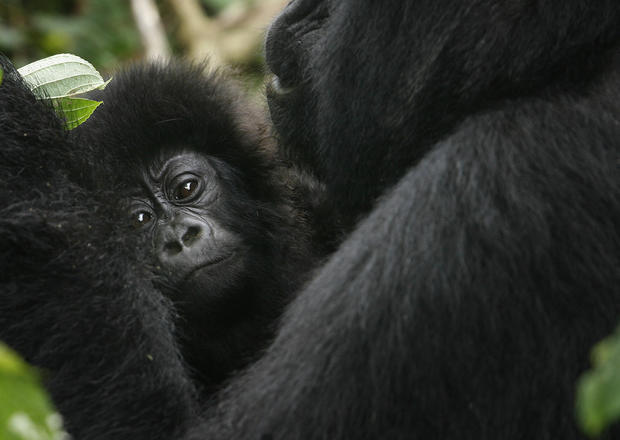HONOLULU – The world’s largest living primate has been
listed as critically endangered, making four of the six great ape species only
one step away from extinction, according to a report released Sunday at the
World Conservation Congress in Hawaii.
The International Union for the Conservation of Nature, or
IUCN, cited illegal hunting in downgrading the status of the eastern gorilla on
its Red List of Endangered Species. The list contains more than 80,000 species,
and almost 24,000 of those are threatened with extinction.
“To see the eastern gorilla – one of our closest
cousins – slide toward extinction is truly distressing,” Inger Andersen,
IUCN director general, said in a statement. “Conservation action does work
and we have increasing evidence of it. It is our responsibility to enhance our
efforts to turn the tide and protect the future of our planet.”
The organization said an estimated 5,000 eastern gorillas
remain in the wild, a decline of about 70 percent over the past 20 years.
Of all the great ape species – the eastern gorilla, western
gorilla, Bornean orangutan, Sumatran orangutan, chimpanzee and bonobo – only
the chimpanzee and bonobo are not considered critically endangered. But they
are listed as endangered.

In this Nov. 25, 2008 file photo, a baby gorilla is held by an adult in the Virunga national park, near the Uganda border in eastern Congo. The eastern gorilla has been listed as critically endangered, making four of the six great ape species only one step away from extinction, according to the International Union for the Conservation of Nature’s Red List of Endangered Species, released Sunday Sept. 4, 2016.
AP Photo/Jerome Delay, File
For the gorillas of the Congo, where the majority of the
population lives, conservation will be a struggle because of political
instability, said primatologist Russell Mittermeier, executive vice chairman of
the Conservation International environmental group and chairman of IUCN’s
primates specialist group.
“There are no simple solutions right now, other than a
much greater investment in on-the-ground protection until the region
stabilizes, at which time major ecotourism, as is happening in the neighboring
countries of Uganda and Rwanda, can take place,” Mittermeier said in an
email to The Associated Press.
In an interview, Catherine Novelli, U.S. undersecretary of
state for economic growth, energy and the environment, called the gorilla
numbers a man-made tragedy.
The research by the Wildlife Conservation Society was
accepted by the IUCN, which is made up of private and government entities and
is hosting the World Conservation Congress. More than 9,000 delegates from over
180 countries are attending this week’s conference in Honolulu, including
several heads of state.
“Critical endangered status will raise the profile of
this gorilla subspecies and bring attention to its plight. It has tended to be
the neglected ape in Africa, despite being the largest ape in the world,”
the study’s lead scientist, Andrew Plumptre, said in an email.
The IUCN compiles its peer-reviewed Red List alongside
partners such as universities and environmental groups within animals’ natural
habitat. It is the most comprehensive analysis of endangered species and guides
government policy around the world, said Cristian Samper, president and CEO of
the Wildlife Conservation Society.
Other animals on the list fared better than the apes,
including the giant panda, which was previously on the endangered list. It is
now listed as “vulnerable” after conservation efforts helped protect
its habitat.
“For over 50 years, the giant panda has been the
globe’s most beloved conservation icon,” said Marco Lambertini, director
general of the environmental group World Wildlife Fund. “Knowing that the
panda is now a step further from extinction is an exciting moment for everyone
committed to conserving the world’s wildlife.”
Hunting and habitat destruction are taking a toll on animals
and plants in variety of areas, the report said.
In Hawaii, about 90 percent of native plants are threatened
with extinction because of invasive species like rats, pigs and non-native
plants, the IUCN said.
In Africa, the plains zebra population has declined by a
quarter since 2002, according to the group’s statement.
Source link
World"s largest living primate close to extinction
Sem comentários:
Enviar um comentário